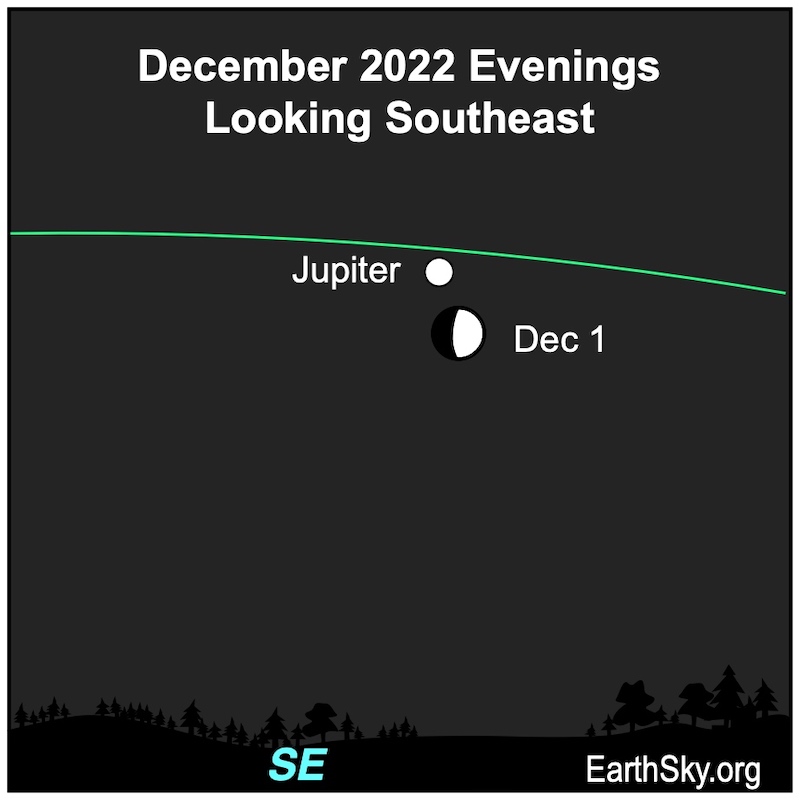
Moon and Jupiter bright Thursday night
Look for the waxing gibbous moon after sunset on Thursday, December 1, 2022. Also, the bright “star” near it is really a planet, the largest planet in our solar system, Jupiter. Other than the moon, Jupiter is the brightest object in the sky this month (although red Mars – now near its December 7 opposition is a close second).
Jupiter reached its opposition on September 26. In December 2022, the king of planets is up all evening and sets around midnight.
For the most precise view of what Jupiter and the moon will look like from your location, visit Stellarium.org.
What’s that bright star by the moon?
We hear this question a lot. And, usually, the object near the moon isn’t a star at all, but a planet! That’s because the five bright planets (Mercury, Venus, Mars, Jupiter and Saturn) are as bright or brighter than the sky’s brightest stars. Plus, the planets and the moon all orbit the sun in the same flat plane. So they all follow the same path through our sky. That path is the ecliptic. It’s the same path the sun travels during the day, and it’s the plane of our solar system projected onto the sky.
As it orbits Earth, the moon makes one circuit around the ecliptic about once a month. So it passes the slower objects in the solar system about once a month. That’s why you can see Jupiter near the moon on December 1, and again on December 29 and 30. Then in January 2023, the moon and Jupiter will be close on January 25.
Generally speaking, you can trace the ecliptic path across the sky by thinking of the path of the sun throughout the year. The sun arcs sometimes higher in the sky (summer), and sometimes lower (winter). Likewise, the ecliptic shifts higher or lower depending on the time of night, and time of year. Also, the ecliptic passes through various constellations. These are the constellations of the zodiac.
In December 2022, Saturn lies to the west of Jupiter along the eclipse. Mars lies to the east of Jupiter. The moon passed Saturn recently, on the night of November 28. And the moon will pass Mars, on the night of Mars’ oposition, December 7. In fact, the moon won’t just pass Mars on that night. It’ll pass in front of Mars. Read about the December 7 occultation of Mars here.
December all night: Mars bright in Taurus

Bottom line: On December 1, 2022, you’ll see a bright point of light close to the waxing gibbous moon. That’s Jupiter! The moon and Jupiter will pair up again at the end of the month.
For more great observing events in the coming weeks, visit EarthSky’s night sky guide











